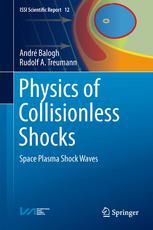

Most ebook files are in PDF format, so you can easily read them using various software such as Foxit Reader or directly on the Google Chrome browser.
Some ebook files are released by publishers in other formats such as .awz, .mobi, .epub, .fb2, etc. You may need to install specific software to read these formats on mobile/PC, such as Calibre.
Please read the tutorial at this link: https://ebookbell.com/faq
We offer FREE conversion to the popular formats you request; however, this may take some time. Therefore, right after payment, please email us, and we will try to provide the service as quickly as possible.
For some exceptional file formats or broken links (if any), please refrain from opening any disputes. Instead, email us first, and we will try to assist within a maximum of 6 hours.
EbookBell Team

5.0
28 reviewsThe present book provides a contemporary systematic treatment of shock waves in high-temperature collisionless plasmas as are encountered in near Earth space and in Astrophysics. It consists of two parts. Part I develops the complete theory of shocks in dilute hot plasmas under the assumption of absence of collisions among the charged particles when the interaction is mediated solely by the self-consistent electromagnetic fields. Such shocks are naturally magnetised implying that the magnetic field plays an important role in their evolution and dynamics. This part treats subcritical shocks which dissipate flow energy by generating anomalous resistance or viscosity. The main emphasis is, however, on super-critical shocks where the anomalous dissipation is insufficient to retard the upstream flow. These shocks, depending on the direction of the upstream magnetic field, are distinguished as quasi-perpendicular and quasi-parallel shocks which exhibit different behaviours, reflecting particles back upstream and generating high electromagnetic wave intensities. Particle acceleration and turbulence at such shocks become possible and important. Part II treats planetary bow shocks and the famous Heliospheric Termination shock as examples of two applications of the theory developed in part I.